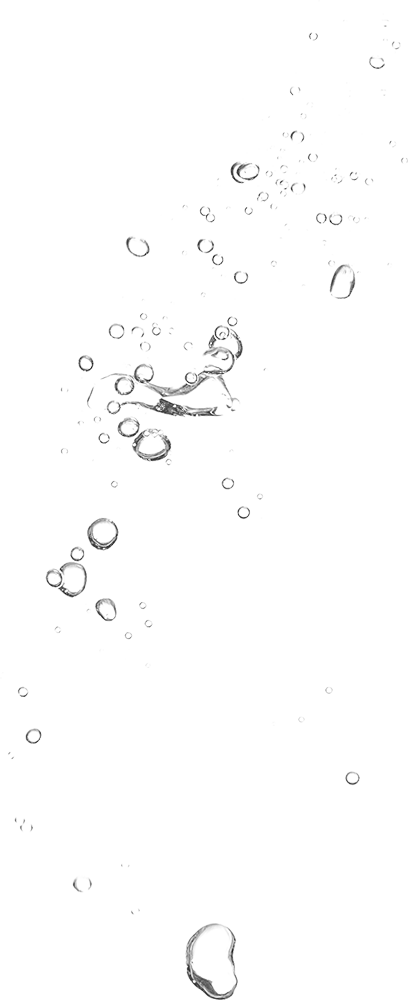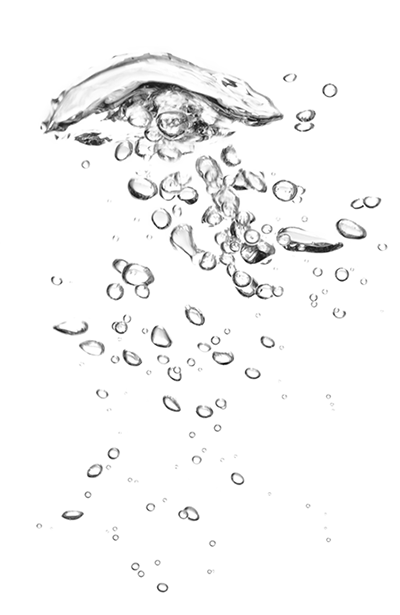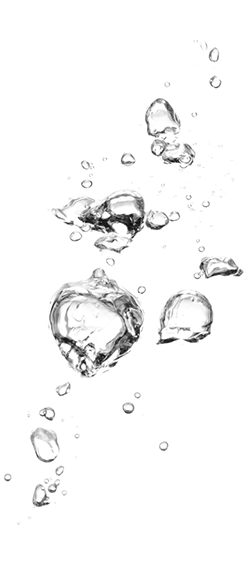


Europe and Middle East
Biwater have delivered a number of strategic turnkey projects across the Middle East, including the Abu Dhabi Sewage Treatment Build, Own, Operate, Transfer (BOOT) contract and Mafraq Wastewater Treatment Works in the United Emirates. These contracts aimed to provide the bulk of wastewater treatment capacity for the rapidly growing Emirate of Abu Dhabi.
- 6 Regional offices
- 50 Years of experience
- 85+ Biwater employees
- 29.9% Of group revenue*
In Saudi Arabia, the Buwayb Desalination Plant was the world’s largest desalination plant at the time of commissioning. Biwater went on to provide training programmes and operational support for five years following commissioning. Another significant Biwater plant in the Kingdom was the Jeddah Water Reuse Facility, which was one of the first water reuse plants in the country.
Most recently, Biwater were awarded a landmark USD $1.2bn water and wastewater treatment project in the Kurdistan Region of Iraq, which will address urgent water supply and sanitation needs across the region.
Key highlights
Financed projects:
- Erbil and Sulaimani Water and Wastewater Project (Development Works), Kurdistan, Iraq: USD $34.8m
Awards:
- Kurdistan, Iraq: 2016 Best Deals, Global Trade Review
- Kurdistan, Iraq: 2016 Export Credit Agency Highly Commended, Trade & Forfaiting Review Deals
Our regional offices
Biwater S.A.S
Postal address:
23 rue Jules Vallès, 69100, Villeurbanne, France
Tel:+33 478 438 696
Email:[email protected]
Biwater International Limited
Postal address:
219 English Village, Gulan Street, Erbil, Kurdistan, Iraq
Tel:+964 7511 920617
Email:[email protected]
Biwater Contracting B.V.
5th Floor Luna Arena, Herikerbergweg 178, 1101 CM Amsterdam Zuidoost, The Netherlands
Postal address:
PO Box 23393, 1100 DW Amsterdam, The Netherlands
Tel:+312 057 55600
Email:[email protected]
Biwater International Limited
Postal address:
Nispetiye Cad, Seher Yildizi Sokak 23/3 Etiler, Istanbul, Besiktas, 34337, Turkey
Tel:+90 212 352 6520
Email:[email protected]
Biwater Middle East DMCC
Postal address:
Unit No: 3990, DMCC Business Centre, Level No 1, Jewellery & Gemplex 3, Dubai. United Arab Emirates
Tel:+971 544 030 543
Email:[email protected]
Biwater Holdings Limited
Postal address:
Biwater House, Station Approach, Dorking, Surrey, RH4 1TZ, UK
Tel:+44 1306 740740
Email:[email protected]
Our projects in Europe and the Middle East
The table below provides an overview of some of our recent projects in Europe and the Middle East, as well as a number of our flagship projects. *Based on Biwater’s financial accounts year ended 30 June 2017
Kurdistan
Iraq
New build
Biwater are carrying out development works for a large-scale water and wastewater treatment contract in the cities of Erbil and Sulaimani. Works will alleviate the current strain on existing infrastructure and reduce the region’s reliance on dwindling groundwater reserves to deliver long-lasting environmental benefits. The development works benefited from a loan financed by UK Export Finance (UKEF). In 2016, the finance deal was awarded the Best Deals Award by Global Trade Review (GTR) and the Export Credit Agency Highly Commended Award by the Trade & Forfaiting Review (TFR). The current stage of works involves 'emergency works' alleviating water scarcity across the region, with a focus on extending the water supply network. Pipe installations are underway.
Scope of works:
Finance, design and construction.
Water treatment capacity:
600,000 m3/day
600 MLD
158.5 MGD US
Wastewater treatment capacity:
150,000 m3/day
150 MLD
39.6 MGD US
Saint-Nazaire
France
New build
In recent years due to the development of its seaport and railways, Saint-Nazaire has grown from a small village to a large town. With an increase in domestic and industrial activities a wastewater treatment plant with a small footprint was required to serve a population of 22,000. Following construction, the plant was operated and maintained for a period of two years.
Scope of works:
Design, construction and operation.
Wastewater treatment capacity:
3,600 m3/day
3.6 MLD
1 MGD US
Abu Dhabi
United Arab Emirates
New build
This large-scale contract involved the construction and operation of a 300 MLD wastewater treatment plant in Wathba, Abu Dhabi, as well as an 80 MLD plant in Saad, Al Ain. The projects aimed to provide the required treatment capacity for the rapidly growing population centres.
Scope of works:
Build, Own, Operate, Transfer (BOOT).
Wastewater treatment capacity:
380,000 m3/day
380 MLD
100.4 MGD US
Minworth
United Kingdom
Upgrade
As part of the Severn Trent Asset Management Period (AMP 4) Framework, Biwater was responsible for carrying out all the construction for the framework projects, which included the refurbishment of the existing Minworth plant. The works served a population of 1.75 million in and around Birmingham.
Scope of works:
Design and construction.
Wastewater treatment capacity:
1,070,000 m3/day
1,070 MLD
282.7 MGD US
Bacau
Romania
New build
Greenfield potable water treatment plant that was built to serve the historical city of Bacau, situated 300km north of Bucharest. Water was pumped from the Poiana Usului Dam 60km away for treatment. The resultant drinking water was distributed to over 200,000 local residents.
Scope of works:
Design and construction.
Water treatment capacity:
60,000 m3/day
60 MLD
15.9 MGD US
Bagnols sur Cèze
France
New build
This wastewater treatment plant was built to serve seven residential and agricultural areas. Working closely with architects involved with the project, the wastewater treatment plant was designed to integrate into the surrounding scenic landscape of vineyards and be in keeping with the traditional construction styles in the Provence Region. The plant sits amongst the vineyards in the wine growing region of Languedoc-Roussillion on the plains of the River Euze.
Scope of works:
Design and construction.
Water treatment capacity:
11,000 m3/day
11 MLD
2.9 MGD US
Piatra Neamt
Romania
Upgrade
This project involved a reconstruction, extension and upgrade to the existing works to generate a maximum treatment capacity of up to 90 MLD. The works needed to serve an increased number of both domestic and industrial locations in and around the city, as the network had been increased and the plant could not handle the additional flow.
Scope of works:
Design and construction.
Water treatment capacity:
90,000 m3/day
90 MLD
23.8 MGD US
Jabail and Yanbu
Saudi Arabia
New build
The project consisted of the construction of three brackish desalination plants with a combined membrane treatment capacity of 44 MLD. The plants were completed for the Royal Commission for Jabail and Yanbu to provide sufficient drinking water supply for local residents and businesses.
Scope of works:
Design and construction.
Membrane treatment capacity:
44,000 m3/day
44 MLD
11.6 MGD US
Abu Dhabi
United Arab Emirates
New build
The Mafraq Wastewater Treatment Plant was the largest wastewater treatment facility of its kind in the United Arab Emirates at the time of commissioning, serving a population of 392,000.The facility was designed to treat increasing flows from the city while allowing the existing works to be taken out of service for refurbishment. A key requirement of the project was the use of effluent water for the irrigation of green projects throughout the city.
Scope of works:
Supply, installation, testing and commissioning
Wastewater treatment capacity:
160,000 m3/day
160 MLD
42.3 MGD US
Eastbourne
United Kingdom
New build
Innovative sub-sea level wastewater treatment works along the coast in a popular tourist area. The plant was designed to serve a population of 130,000 and ensure the state-of-the-art works maintained the highest level of odour control. While the treatment works were underground and essentially invisible, the above-ground structure was designed to be in keeping with the natural surroundings.
Scope of works:
Design and construction.
Wastewater treatment capacity:
216,000 m3/day
216 MLD
57.1 MGD US
Doha
Qatar
Upgrade
Turnkey project that extended the existing sewage treatment works to serve an additional 50,000 local residents. The additional works were construction adjacent to the existing plant, and included an activated sludge system with a peak flow capacity of 40.5 MLD.
Scope of works:
Design, supply and construction.
Wastewater treatment capacity:
40,500 m3/day
40.5 MLD
10.7 MGD US
Baghdad Akashat Railway
Iraq
New build
The Baghdad AI Qaim Akashat Railway Project was one of the largest single projects to have been delivered in Iraq at the time. The railway ran for a distance of 530km and included 27 passenger stations. The route ran close to the Euphrates River and through variable terrain. Biwater designed and constructed three river intakes on the Euphrates River, along with three package water treatment plants (biPAKs), nine pumping stations and a number of storage tanks. Biwater installed 430km of ductile iron pipe to distribute the water from the biPAK plants to the population centres along the new railway line and the 27 passenger station.
Scope of works:
Design and construction.
Water supply capacity:
8,500 m3/day
8.5 MLD
2.2 MGD US
Tubili
Bahrain
Upgrade
The project involved adding 22.6 MLD capacity to an existing Biwater designed plant to bring the total treatment capacity to 81.6 MLD. The effluent water was treated for use as irrigation water.
Scope of works:
Design and construction.
Wastewater treatment capacity:
27,600 m3/day
27.6 MLD
7.3 MGD US
Jeddah
Saudi Arabia
New build
A reclamation plant built for Jeddah was one of the first of its kind in the country. The reuse facility was built to treat secondary effluent from the existing sewage treatment works to produce irrigation water, as well as water for limited domestic use as ‘greywater’. As such, it was important the treated water from the reuse plant meet all World Health Organisation (WHO) standards to be safe for human consumption, in any quantity. The scope of works included an off-site storage reservoir and the interconnecting pipework. The process design was based on in-depth laboratory testing.
Scope of works:
Design and construction.
Wastewater treatment capacity:
30,000 m3/day
30 MLD
7.9 MGD US
South Doha
Qatar
Upgrade
This ‘Phase V’ extension project built upon the existing wastewater treatment plant to increase capacity. Digested sludge was used for composting and the effluent from tertiary treatment was used for irrigation. The original 20 MLD Doha South activated sludge plant was originally completed in 1979 by Biwater.
Scope of works:
Design and construction.
Wastewater treatment capacity:
15,000 m3/day
15 MLD
4 MGD US
Countrywide
Kuwait
New build
Seven reinforced concrete reservoirs were constructed across Kuwait to support efforts to improve water storage and supply to important population centres.
Scope of works:
Design and construction.
Water storage capacity:
1,450,174 m3
319,038,280 gal (UK)
383,135,971 gal (US)
Buwayb
Saudi Arabia
New build
The world’s largest desalination plant at the time of commissioning. In addition to pre-treatment and reverse osmosis works, the brackish desalination facility contract included the delivery of a power generation station, on-site reservoir and ‘high zone’ reservoir. Following construction, there was a five year operation and maintenance period, which involved technical management, supervision and the supply of parts. The water source for the plant was from 18 2,000m deep wells in the area.
Scope of works:
Design, construction and operation.
Membrane treatment capacity:
59,000 m3/day
59 MLD
15.6 MGD US
Sign-up to receive Biwater updates and insights via email:
